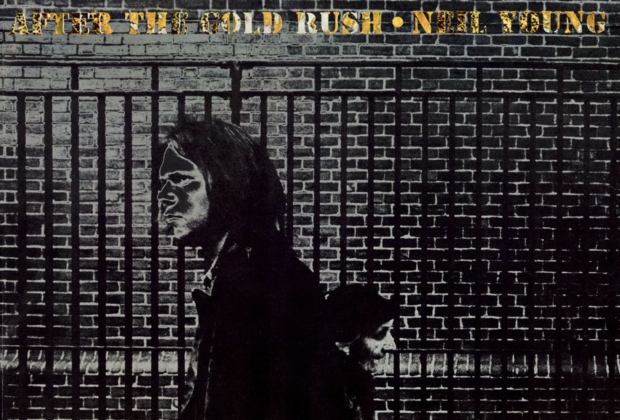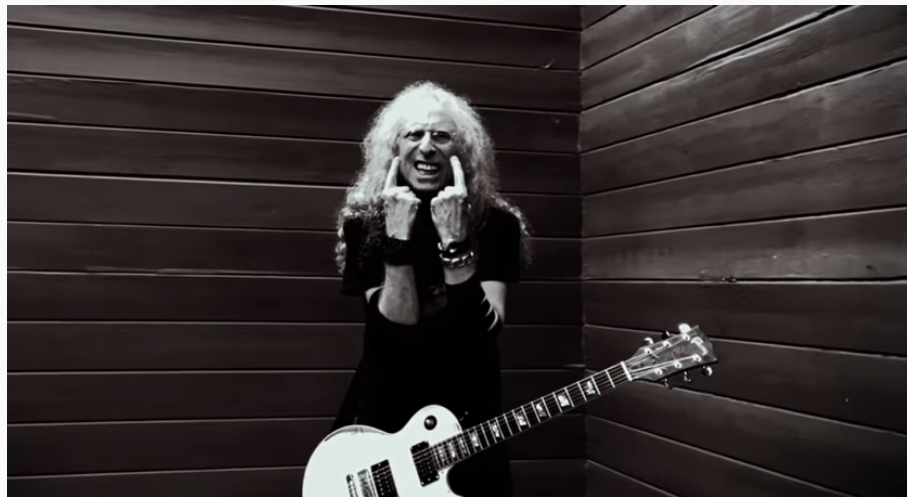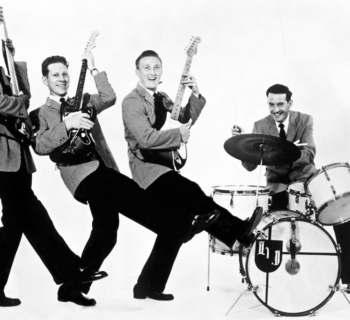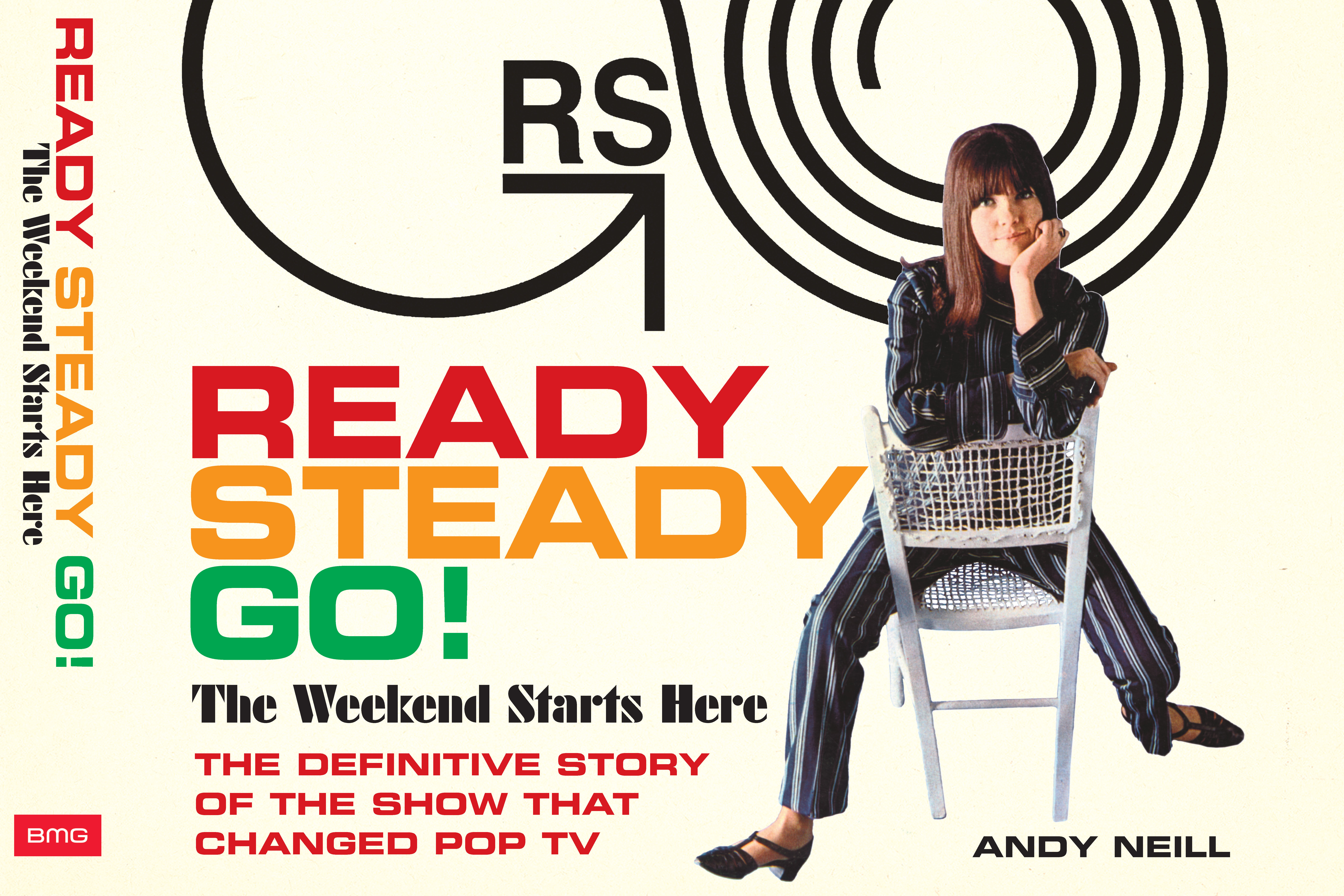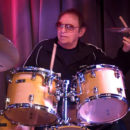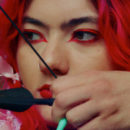With the addition of Nils Lofgren on second guitar and piano, keyboardist Jack Nitzsche, bassist Greg Reeves along with drummer Ralph Molina, After The Gold Rush, produced by David Briggs, was the audio promise from an artist now in command of his gifts.
Released on August 31, 1970, the album was recorded at Sunset Sound in Hollywood, Sound City in Van Nuys, and in Topanga at Redwood Studios.
The LP cover is a solarized, slightly out of focus photograph by Joel Bernstein of Young walking past a building on the campus of the New York University School of Law. The art direction and design is by Gary Burdon.
In 2015 I interviewed multi-instrumentalist Nils Lofgren about After The Gold Rush for Record Collector News magazine.
“I met Neil when I was with Grin in Washington, D.C. We were about to go to L.A. And true to his word, Neil had said, ’Look me up when you get out there.’
“Three weeks later we were there. We rented a house on Normandie. East Hollywood. I started hitchhiking out to Topanga Canyon every day. Finally, David Briggs said, ‘Why are you hitchhiking out here? Why don’t you just move in? I’ve got a spare bedroom.’
“And my first night there, and then for once or twice a week, he’d have a poker game with Russ Tamblyn, Dean Stockwell, Billy Gray, Danny Tucker, the road manager for Spirit and Jo Jo Gunne, and some Topanga people. (Neil and drummer Bruce Gary would occasionally play as well). And it was fine for me to crash there. I slept on a mattress on the floor in a dark room and could see the kitchen. I wasn’t a poker player, but I was lookin’ into the light of the kitchen with these cast of characters playing poker and crawling at me on the wood floor is a scorpion. And I thought, ‘Welcome to Topanga Canyon.’ It remained that colorful all the years there.
“Grin quickly became the house band at The Corral. And Neil came and sat in with us and we were so thrilled. We were still kids. I was 17. The next day at Neil’s house, him and Briggs said, ‘Man, your band is great but you got to get a better bass player.’ Of course we were traumatized. Long story short, we did. After all, it was Neil Young and David Briggs. And as we made our way through ups and downs with lousy management we finally wound up with Art Linson, through Danny Tucker, who was Lou Adler’s partner who hit it off with Briggs and Grin, and that started a beautiful long history.
“We played at The Corral and cut our teeth and constantly under the mentoring of Neil and David, who was really with us day to day. And Neil was involved and interested and remained true to his word when he said, ‘Look me up.’ I mean, it was a lot more than that. And then Crazy Horse, and After The Gold Rush.
“It was just one of those magical moments that reminded me of those days in 1968, ’69, where Briggs warned me, ‘Neil is gonna call you about a project. I think you’re gonna like it. I think you ought to do it. I’m gonna produce it. I’m doin this After The Gold Rush thing. Want you to be in the core band playing guitar, singing and piano.’
“I was back east visiting my folks and when I got back to Topanga I gave Neil and David the bad news I wasn’t a professional pianist. Those two guys looked at me and said, ‘You’ve been playing classical accordion and winning contests for ten years.’ I said, ‘Right.’ ‘We just need some simple parts. You’ll figure it out.’ And it was that kind of passionate foresight that they had a lot more faith in me that I did, and at that point I wasn’t gonna argue with them. ‘OK. I’ll do my best.’ And it worked out.”
Lofgren played piano on the entire After The Gold Rush album except “When You Dance I Can Really Love” which featured Jack Nitzsche.
“I dabbled and did a few piano parts on the first Grin record, but never considered myself a professional piano player,” admitted Nils. “David Briggs my producer knew how nervous I was being a pianist. And John Locke of Spirit lived right up the road from David in Topanga. John had a porch with a funky old upright piano. He said, ‘Nils, the door is unlocked. My bedroom is on the other side. I can’t hear this piano. You can come 24 7.’ And I did.
“I put a sleeping bag on John’s porch at his house and just practiced and practiced. And still, Neil and David, maybe they knew, they were going to get simple rhythmic solid things from me and Ralph (Molina) with a very colorful Greg Reeves underneath a lot of movement on bass, kind of like the James Jamerson school of playing, and Neil on top. And, they realized they’d get that from me as opposed to a great session player who you would have had to coach to play that simple and might not enjoy it.
“But the bottom line was Neil Young, David Briggs to start and then Jack Nitzsche, I learned early on that you must be authentic and passionate about what you are doing first at all costs. You must never let go of that. I continued on with what I learned from Neil, David and Jack, with Crazy Horse. Be authentic. Be excited and engaged and remain passionate about it all costs. And with that honesty the rest will work out.”
During 2015 I communicated with writer, author and Tam Tam book publisher Tosh Berman who grew up in Topanga Canyon.
Portions were utilized in my 2016 book on Neil Young, Heart of Gold.
“When you are in the community like Topanga Canyon you start developing social habits and being with people. In a way it’s a private club, or a private boy’s club including very masculine men who had motorcycles. Neil could live there and still record in Hollywood or visit his record label in Burbank.
“Russell Tamblyn, Dean Stockwell, George Herms were always around. Brian Jones and Keith Richards came by once. I’m pretty sure Toni Basil made the initial introduction. Brian came by numerous times when we lived in Beverly Glen. John Locke of Spirit was a friend of my dad’s.
“I remember one time as a kid a huge envelope came from England and it was a letter from Brian Epstein wanting my dad to sign a permission to use his image on the front cover of the Beatles’ Sgt. Pepper’s LP cover.
“I must have first met Neil at a social setting, a party as a kid at the Topanga market. Neil’s wife Susan ran the Topanga Kitchen. And Neil would always be there. We’d say hello. Neil would hang out at Russ’ house. It wasn’t [my father] Wallace, Dean or Russell teaching Neil directly about how to be an artist but maybe more of Neil observing them. I think Neil was watching what was happening and observing the scene and watching Russell work in his studio.
“The playback party for After The Gold Rush was held at Neil’s and Susan’s house. Not a huge place, typical Topanga house multi-level. I believe some of the photos of Neil’s Everybody Knows This Is Nowhere were taken there. It was very casual. Not a record label listening party. An invited group of people, Dean and Russel, maybe George Herms, Neil’s manager, my dad and mom. Mo Ostin was there. I think my dad knew Mo from Fairfax High School. I met the artist [Roland Diehl], who painted the cover of Neil’s first album.
“When I first heard After The Gold Rush I loved it. At this time, Dean wrote a script or screenplay with Herb Berman, After The Gold Rush. An apocalyptic tale about Topanga where I think it’s destroyed.
“As a kid I read the script and I knew After The Gold Rush before Neil Young got involved. I think Dean asked Neil to do a soundtrack or songs for the movie to get money from a studio. So at the time I thought of it really being tied in with the movie. Like an offshoot of the film. When I heard the album playback I was under the impression that Dean’s movie was going on. I’m not sure. I know Dean got inspiration credit on the album. It stayed in my mind. There were songs I hear that did not make the official released album. It was a different record. The sequencing was changed, songs moved around. Some songs were added I believe. When I heard the album it was not the same record from the listening party.
“In a way, to me, Neil Young is like Sinatra. When I met him it was Neil and his gang. I’m age 12. Neil had his guys like Elvis had his guys and Sinatra had his guys, people who worked for him or hung out with him. Danny Tucker involved with Nils Lofgren and David Briggs. There was the Dean, Russell and Wallace’s social circle and Neil Young and sometimes it would merge with the Wallace and Dean and Russell world. Dean was a very close friend of my father and mother and very supportive. He did a lot of visual collages. Russell was an actor and artist. I sort of knew who he was when I met him ‘cause I saw Westside Story. In general, they were actors that did not attract attention. Brian Jones did and he would get in crowds.”
After the Gold Rush is without a doubt one of my All Time Favorite Top Ten albums,” emphasized actor, filmmaker and multi-instrumentalist Bill Mumy, who emailed me in August 2020.
“It has never once sounded anachronistic to me in the fifty years since I bought it at Do Re Mi Records on Pico Boulevard in West Los Angeles the day it was released, for three dollars and forty four cents. The album continues to resonate deeply.
Neil's first two previous albums, Neil Young and Everybody Knows This Is Nowhere were great, but Gold Rush was a huge leap forward. It's obvious to me that he had learned from the previous two, the first being somewhat overproduced and over arranged, the second, with Crazy Horse, perhaps just a bit too rough and extended.
“Gold Rush contains no nine minute jams and it's never cluttered or trying to show off. ‘Southern Man’ clocks in a bit over 5 minutes, and I'm sure Neil was tempted to jam on it for another fifteen or so, but he reins this rocker in at just the right time. All the melodies and progressions on the album are memorable. The lyrics are enigmatic at times but always visual, honest and never overly poetic or obtuse. ‘Birds’ is one of the best breakup songs ever written.
“The entire project is presented in a less-is-more manner but with a very strong foundation. It's mellow. It rocks. It's acoustic. It's electric. It's celebratory. It's tragic. It's cinematic. The vocal harmonies throughout are excellent but they never attempt to compete or impress like the magic blend of that other band Neil was in at the time, CSN&Y.
“We all knew that Neil had written these songs based on a project Dean Stockwell had written, but as far as I know, none of us ever knew anything beyond that regarding the catalyst for the birth of these songs. The album is recorded and mixed in a very straight to the point presentation that asks for and gives nothing more. There is no studio trickery on Gold Rush. It's an honest, intense, soulful, wonderful 35 minutes of Neil Young and friends at the very pinnacle of his powers. Listen to it again. ‘And you will come around’.”
In 2020, Dr. James Cushing, co-founder of Cahuenga Press also emailed me his personal reflection on After The Gold Rush.
“It’s a lonely weekend in the dorms, 4:40am Saturday night / Sunday morning, January 1972. One part of my 18-year-old mind wonders whether I’ll ever find a girlfriend, and another part has the glimmer of a realization that my loneliness is part of a particular state of being that will not last, this thing called adolescence, and that I can bemoan it or find a way to be comfortable in it while it lasts. It’s not a fully articulated thought, just a glimmer of one, but the feeling that accompanies it is warm and sweet and fragile, and I want to have that feeling next to me in my lonely U.C. Santa Cruz dorm room.
“I flip through my LPs and find the only two records I own that reflect and give shape to this feeling. They’re both by Neil Young: one is a bootleg double album called I’m Happy That Y’All Came Down, an audience recording from a solo acoustic concert at the Dorothy Chandler Pavilion, and the other is After the Gold Rush — but the official Warner/Reprise album has better sound. I put on Side One, and by the time he’s singing ‘Is it hard to make arrangements with yourself / when you’re old enough to replay but young enough to sell,’ something very private has started to happen, and I’m not lonely anymore.”
During 2015 Dr. Cushing’s daughter Iris Cushing and I discussed After the Gold Rush in an interview. Iris is now completing a PhD at CUNY in Manhattan and is working on a book about poet Diane DiPrima. She’s the author of Wyoming (Furniture Press, 2012) and co-edits Argos Press with Elizabeth Clark Wessel. Pace Gallery recently published her collaborations with painter Loie Hollowell. Iris also writes art criticism for Hyperallergic.
Portions of our 2015 exchange were implemented in Heart of Gold.
I discovered After The Gold Rush this century, after my sophomore year at college [2002-03]. [That album] defines a time. I was really drawn to the way some of his songs felt really unadorned and really authentic. Right away I trusted Neil Young. His voice had this truthfulness that was, I think, related to the androgyny I heard in it. I did not find his voice particularly ‘manly.’ It was high pitched, soft and strange sounding. He presented an aesthetic.
After The Gold Rush has a lot in it. They made albums in a different way back then. The pieces fit together skillfully. My father told me a couple of songs on the record were initially inspired by a film project. I’m sure Neil spent some time on sequencing the tracks as well. For ‘Tell Me Why,’ the first song, I did not know what the lyrics meant but I felt they were applicable to my situation. [laughs]. There was a message but I didn’t know what it was. The whole album really resonated with where I was with my life.
“In ‘Till The Morning Comes’ and the title track of the album, I feel there’s a kind of fragmentary mythology there, that Young’s telling stories you are only getting a small fragment of. And they feel really emotionally significant. You can tell when he’s singing them that he’s bringing in something very sincere to him but he’s not telling the whole story. And that quality of it, that subtlety of inference, really allowed me to feel like he was talking about my own life. And he made the songs into a very inviting, open text. Not one closed message that he was trying to communicate, but rather something that’s always open to interpretation and therefore continually alive.
“The placement of ‘When You Dance I Can Really Love’ on the rest of the album gives it a feel like a breath of fresh air. There’s this really carefully wrought balance of sincerity and pathos on the album. Some of the lyrics of the title track and ‘Don’t Let It Bring You Down’ and the inclusion of ‘Oh Lonesome Me.’ There are moments where sincerity and heartbrokenness is really meticulously balanced with a real subtle sense of humor, like the piano on ‘When You Dance’ and ‘Southern Man.’ The amateurish piano playing on ‘Southern Man’ lends a slight, delicious flavor of comedy.
“I found out years later the piano player [Nils Lofgren] on ‘Southern Man’ never really played piano before he did these sessions with Neil. But then, when another piano player [Jack Nitzsche] joined Neil and his core musicians on ‘When You Dance,’ it’s like just hot and rocking. Erotic in a real pure way. It balances out the lonely, funny songs.
“This album has a definite eroticism in its lyrics as well as the singing. But it’s a more rich and complex eroticism than, say, Jim Morrison. It’s a more weird, much more ‘wise’ in the Shakespearian sense. It’s not easy to put into any particular category. I felt really let in to that as a teenager.
“He does draw on American native traditions and more rural folk traditions. As for ‘Southern Man,’ I always remember that Neil Young is Canadian and has this cool, hip, exciting removal from American capitalism. What does it mean to him to mount a social critique?”
In August 2020, Neil Young released “Lookin’ For A Leader 2020” from the recent Porch Episode of his acclaimed Fireside Sessions livestream series today. The song can be heard and viewed exclusively on Neil Young Archives.
Originally released on 2006’s Living With War, this lyrically revised and impassioned update is squarely aimed at the problems we currently face.
The track was recorded during the lock-down – live, immediate and raw as emotionally intended. “Lookin’ For A Leader 2020” is available digitally now through Neil Young Archives and all DSP's.
In 2014 I talked to beloved music advocate Gary Stewart, a former VP A&R executive for Rhino Records and an Apple Music consultant about Neil Young.
“We were involved only peripherally with the release of the Buffalo Springfield box and only got to use barely a handful of tracks on our other compilations but Neil Young was somebody we always talked about as the gold standard for how to be a veteran artist without falling into the classic rock coffin that engulfed so many of his peers.
“I remember when the The Bridge came out in 1989. It was one of the first serious tribute albums before they became a predictable trend -which in itself was an indication of both how much he mattered and how long he mattered for (just over two decades at that point).
“Then I noticed the lineup which didn't consist of veteran acts, or sensitive singer songwriter types but of the then cream of post punk and indie rock- The Pixies, Nick Cave and Sonic Youth - the kind of artists you’d expect to see on a Velvet Underground tribute album. But then I realized the punks got him because he always got the punks. Something was made clear on Rust Never Sleeps - but it's there on some of the earliest Springfield recordings.
“If you look at that elite group, the veteran artists started in the rock 'n roll idiom still making diverse music that matters by looking forward and telling the truth - Elvis Costello, Patti Smith, Tom Waits - it’s hard not to think of Neil as the first person that set the example for having perspective and legacy without losing edge - that he was built for speed and distance.”
(HARVEY KUBERNIK is the author of 19 books, including Canyon Of Dreams: The Magic And The Music Of Laurel Canyon andTurn Up The Radio! Rock, Pop and Roll In Los Angeles 1956-1972. Sterling/Barnes and Noble in 2018 published Harvey and Kenneth Kubernik’s The Story Of The Band: From Big Pink To The Last Waltz. For 2021 they are writing a multi-narrative book on Jimi Hendrix for the same publisher.
Otherworld Cottage Industries in July 2020 has just published Harvey’s 508-page book, Docs That Rock, Music That Matters, featuring Kubernik interviews with D.A. Pennebaker, Albert Maysles, Murray Lerner, Morgan Neville, Michael Lindsay-Hogg, Andrew Loog Oldham, John Ridley, Curtis Hanson, Dick Clark, Travis Pike, Allan Arkush, and David Leaf, among others.
UK-based Palazzo Editions arranged Harvey’s music and recording study, an illustrated history book, Neil Young, Heart of Gold published in 2015, by Hal Leonard (US), Omnibus Press (UK), Monte Publishing (Canada), and Hardie Grant (Australia), coinciding with Young’s 70th birthday. A German edition was published in 2016.
In 2020 Harvey served as Consultant on Laurel Canyon: A Place In Time documentary directed by Alison Ellwood, which debuted on May 2020 on the EPIX/MGM television channel. It was recently nominated for Three Emmy nominations.
Harvey served as Consulting Producer on the 2010 singer-songwriter documentary, Troubadours, directed by Morgan Neville. The film screened at the 2011 Sundance Film Festival in the documentary category. PBS-TV broadcast the movie in their American Masters series.
Harvey Kubernik, Henry Diltz and Gary Strobl collaborated with ABC-TV in 2013 for their Emmy-winning one hour Eye on L.A. Legends of Laurel Canyon hosted by Tina Malave.
Kubernik’s writings are in several book anthologies, most notably The Rolling Stone Book Of The Beats andDrinking With Bukowski. He was the project coordinator of the recording set The Jack Kerouac Collection.
Kubernik has just penned a back cover book jacket endorsement for author Michael Posner’s book on Leonard Cohen that Simon & Schuster, Canada, will be publishing this fall 2020, Leonard Cohen, Untold Stories: The Early Years). •

